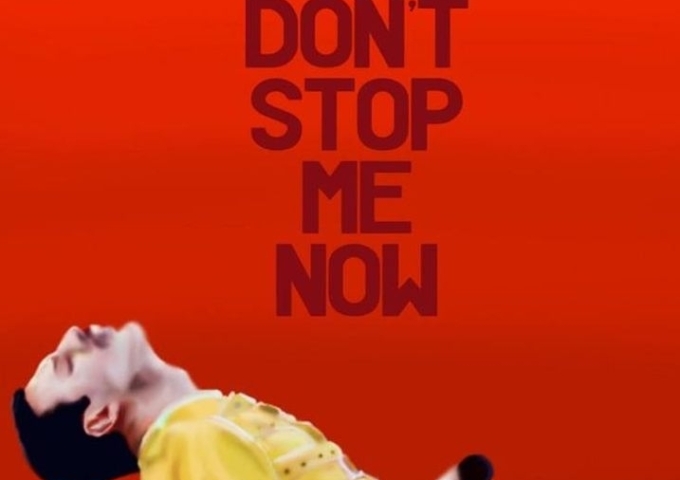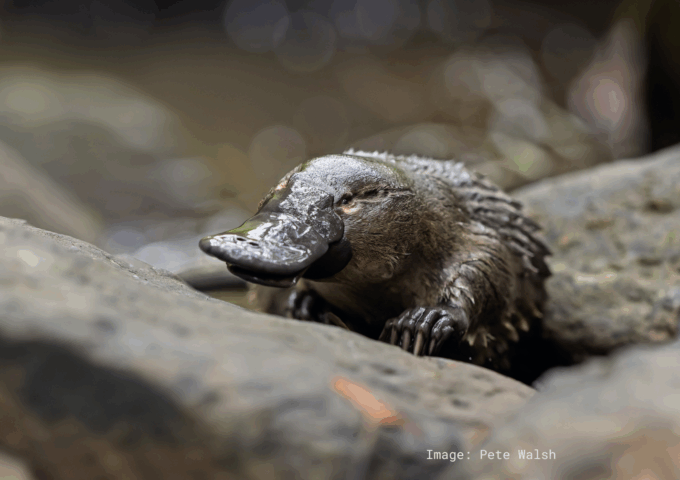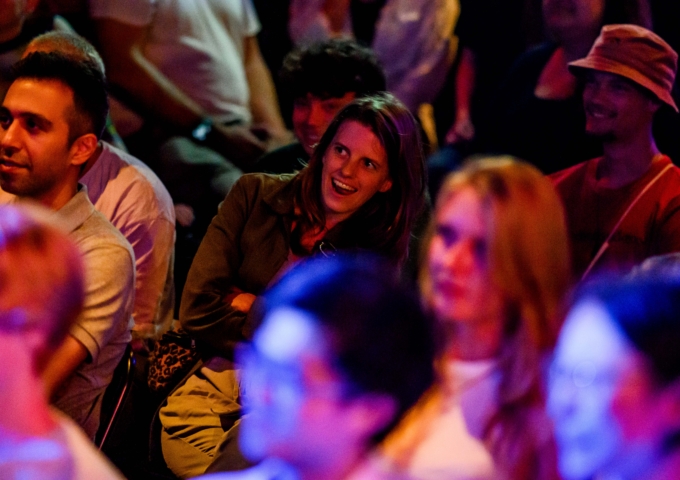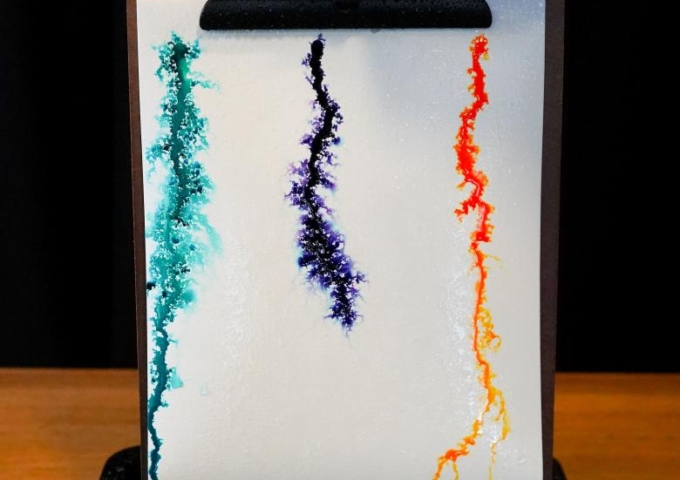
Create lightning art through the powers of gravity and surface tension.
What you need
- Watercolour paper (you can get this at an art supply store)
- Food colouring
- A clipboard
- A spray bottle with water
- Something to catch drips – like a baking tray
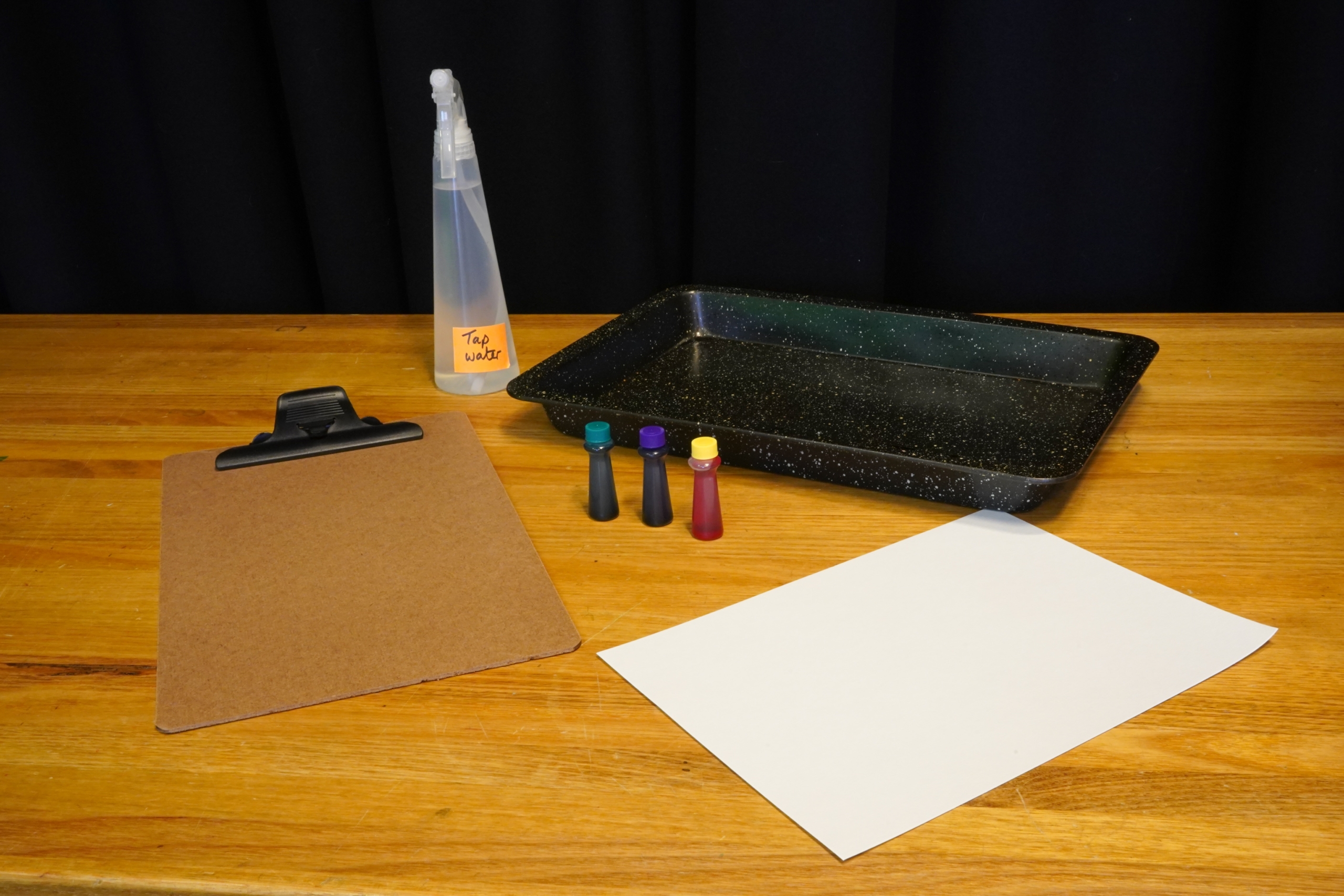
What to do
- Put the watercolour paper on the clipboard and place some small drops of food colouring near the top of the sheet.
- Hold or prop the clipboard upright above the baking tray.
- Lightly spray the lower section of watercolour paper with water. Get it damp, but not wet!
- Now lightly spray the dots of food colouring. This works best if you spray the paper from about a metre away, with the spray bottle in ‘mist’ mode.
- Watch as the food colouring runs down the watercolour paper making colourful lightning patterns.
Before you read what’s happening, ask yourself some of the questions below.
- What do you think will happen if you put the dots closer together?
- What do you see happen when the colours mix as they run down the paper? Why do you think that is?
- How does adding more water affect how the colours move down the paper?
- What happens if you add some drops of dishwashing detergent to the paper beforehand? Make some guesses before you try!
- Why do you think it makes this pattern?
What’s happening
As the water runs down the page, it carries the ink with it. But why does it make those patterns? Believe it or not, it is because water molecules are slightly sticky! But they can be picky about what they stick to. On some materials – such as glass or a butterfly’s wing – the molecules just stick to each other and form a droplet. For other materials – like fabric and paper – the water molecules stick to the fibres easily, and soak in instead of making droplets on the surface.
Surprisingly, it is more difficult for water molecules to stick to watercolour paper than regular paper. This means the water soaks in more slowly, giving the artist more control. It also means that most of the water from the spray bottle stays on the surface of the paper as droplets. Food colouring behaves similarly because it is almost entirely made of water. As the droplets of food colouring are pulled down by gravity, they merge with the droplets of water from the spray bottle on the surface of the paper.
But some of the water molecules do soak into the paper, sneaking in between the microscopic paper fibres. These water molecules take some of the food colouring with them. Because they like to stick to each other, the water molecules pull more water in behind them as they move deeper through the gaps between the paper fibres. These gaps are arranged messily, like rice bubbles in a rice-bubble slice. The water is always looking for the easiest path between the fibres. This makes it take a zig-zaggy, twisted path through the paper – resulting in the beautiful, lightning-like patterns!
This DIY Science activity was adapted from Questacon’s Hands on Activities page. You can find this and more experiments at: https://www.questacon.edu.au/learn-and-play/activities/rainbow-lightning




